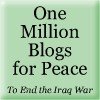Martin Luther King
A few years ago, I was teaching my British literature class about the Reformation; I told them about the role of Martin Luther in that spiritual revolution, how he insisted that the Catholic church was disregarding people’s perfect right to go directly to God. A student raised his hand and asked, “Was Martin Luther named after Martin Luther King?”
A handful of students laughed, and the rest just looked curious, because they probably wondered the same thing. Oh, dear. No concept of time.
~~~
Martin Luther King’s name was a self-fulfilling prophecy, in a way. He, too, was a leader of a revolution, one that was both earthly and spiritual. I looked up the Martin Luther King, Jr., Research and Education Institute web site, where I learned that King first heard of the concept of nonviolent struggle when he was a freshman in college, studying Henry David Thoreau’s Essay on Civil Disobedience. (I made a mental note that I will tell my students that.) He was at first skeptical “about its potential as an instrument for social change.”
The methods that King taught required great courage, faith in God, and solid grounding in love.
The web site tells how King eventually became a dedicated believer in the power of nonviolent resistance:
It was the Montgomery bus boycott of 1956 . . . that would demonstrate to King the power of nonviolent resistance as a tactical weapon against racial discrimination. With guidance from black pacifist Bayard Rustin, King personally embraced Gandhian principles and chose not to use armed bodyguards despite threats on his life. King recalled, “Living through the actual experience of the protest, nonviolence became more than a method to which I gave intellectual assent; it became a commitment to a way of life. Many issues I had not cleared up intellectually concerning nonviolence were now solved in the sphere of practical action.”
The experience in Montgomery enabled King to merge the ideas of Gandhi with Christian theology. He recalled, “. . . my mind, consciously or unconsciously, was driven back to the Sermon on the Mount and the Gandhian method of nonviolent resistance. This principle became the guiding light of our movement. Christ furnished the sprit and motivation while Gandhi furnished the method.”
Martin Luther King, Jr., Research and Education Institute.
http://www.stanford.edu/group/King/liberation_curriculum/
http://www.stanford.edu/group/King/liberation_curriculum/








No comments:
Post a Comment